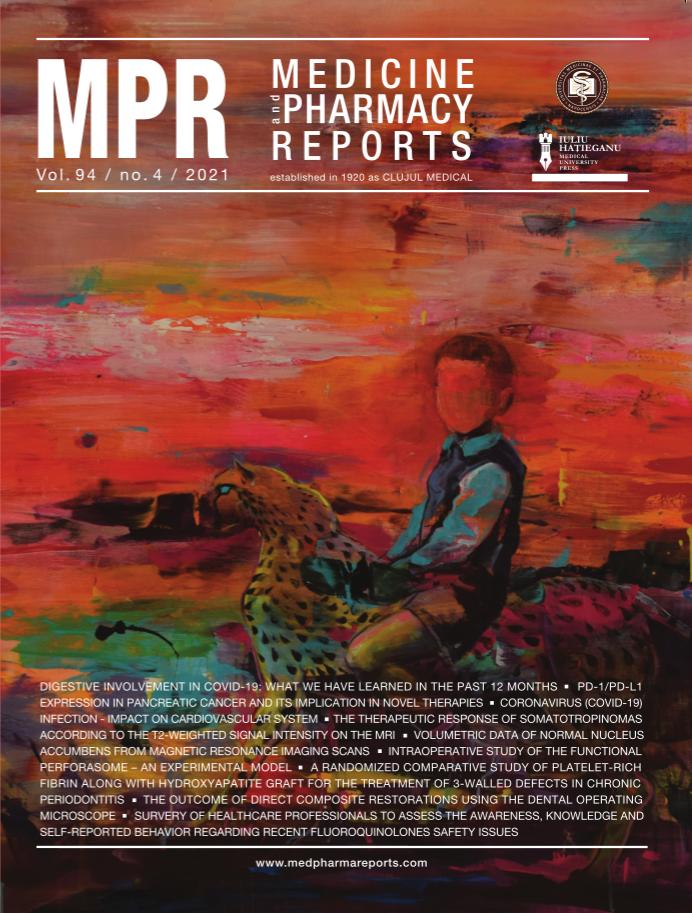Intraoperative study of the functional perforasome - an experimental model
DOI:
https://doi.org/10.15386/mpr-1896Keywords:
functional perforasome, direct perforator, experimental study, epigastric artery, methylene blueAbstract
Background and aims. The aim of this study is to find the most suitable protocol based on an animal experimental model, through the use of a fluorescent dye, determining also its minimal concentration needed to stain the skin after arterial injection, in order to be evidence the functional perforasome by visual examination.
Methods. Methylene blue solution was used in order to determine the territory vascularized by one perforator on fresh cadavers in many studies which introduced, as a final result, the concept of perforasome. One of the most frequent complications of perforator flaps is partial flap necrosis which could be avoided by correctly assessing pre-operatively the functional perforasome surface.
Two groups of seven rats were used in order to establish a proper surgical protocol to evaluate the functional perforasome in vivo by injecting the dye. Also, the minimal concentration for methylene blue was experimentally determined.
Results. The direct injection into the femoral artery of the proper concentration of dye, 1mM for methylene blue and the clamping of all the branches except the medial branch of the superficial epigastric artery is a reliable model to study the functional perforasome.
Conclusions. Our study demonstrates that the intraoperative assessment with fluorescent dye of the functional perforasome by intra-arterial injection of methylene blue is an easy, affordable and very efficient method to reduce the number of partial necrosis of the perforator flaps.
Downloads
Published
How to Cite
Issue
Section
License
The authors are required to transfer the copyright of the published paper to the journal. This is done by agreeing to sign the Copyright Assignment Form. Whenever the case, authors are also required to send permissions to reproduce material (such as illustrations) from the copyright holder.

The papers published in the journal are licensed under a Creative Commons Attribution-NonCommercial-NoDerivatives 4.0 International License.

